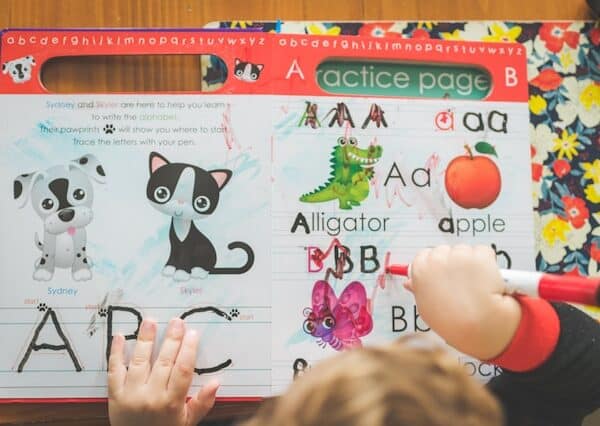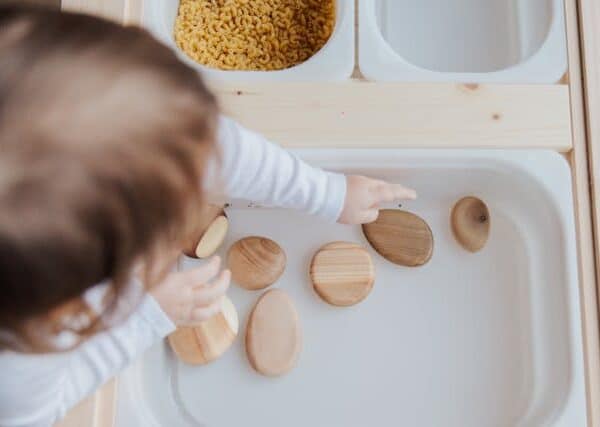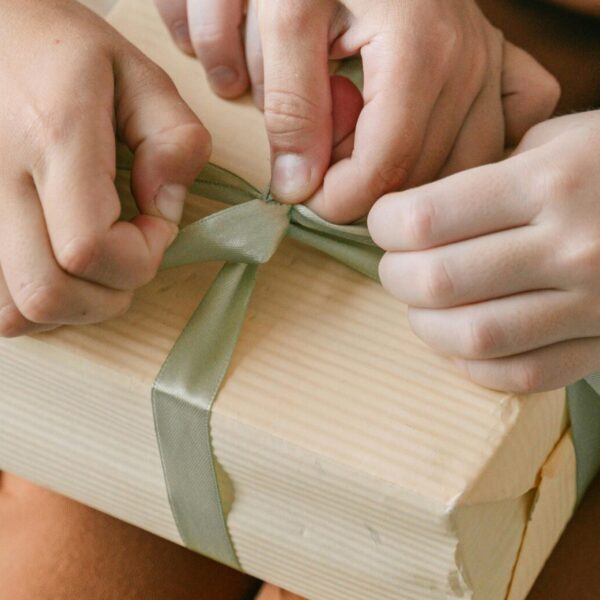Exploring Montessori: Inspiring Examples of Child-Led Education
Welcome to a world where education is tailor-made for every child’s individual needs and interests – welcome to the Montessori approach. In this article, we will talk about montessori examples journey and discover how it empowers children to become self-directed learners and independent thinkers.
From the iconic Montessori materials, carefully designed for hands-on exploration, to the beautifully prepared environments that stimulate imagination and curiosity, Montessori classrooms provide a nurturing space where children can thrive.

Through the guidance of trained Montessori educators, children learn at their own pace, following their innate curiosity and developing a love for learning that lasts a lifetime. Whether it’s engaging with nature, exploring math concepts through manipulatives, or delving into cultural studies, every aspect of the Montessori curriculum is designed to foster a child’s holistic development
Join us as we delve into inspiring examples of child-led education, where creativity, independence, and a passion for lifelong learning are nurtured. Explore the wonders of Montessori education and discover the extraordinary potential within every child.
What is the Montessori method

The Montessori method is an educational approach developed by Dr. Maria Montessori, an Italian physician and educator, in the early 20th century. Dr. Montessori believed that children have an innate desire to learn and that the role of education is to nurture and guide this natural inclination. At the heart of the Montessori method is the belief in the child’s ability to learn independently. Montessori examples is realted to hands-on experiences and exploration.
In a Montessori classroom, the emphasis is on creating an environment that supports the child’s natural development. The classroom is carefully prepared with a wide range of materials and activities that cater to the different stages of a child’s development. The Montessori approach recognizes that each child is unique and allows for individualized learning experiences.
The Montessori method is based on the idea that children learn best when they are actively engaged in their own learning. Dr. Montessori observed that children go through sensitive periods, or periods of heightened interest and receptiveness, for different types of learning. The Montessori curriculum is designed to take advantage of these sensitive periods, providing children with the opportunity to explore and master different concepts and skills at their own pace.
The principles of Montessori education
Montessori education is guided by a set of fundamental principles that shape the learning environment and the interactions between educators and children. These principles are based on Dr. Montessori’s observations of children and her understanding of their developmental needs. Let’s explore some montessori examples cores:
Respect for the child's autonomy and independence
One of the core principles of Montessori education is the belief in the child’s natural ability to learn and make choices for themselves. Montessori educators respect the child’s autonomy and provide them with opportunities to develop independence and self-discipline. In a Montessori classroom, children are encouraged to choose their own activities, work at their own pace, and take responsibility for their learning.
Montessori educators act as guides, offering support and guidance when needed, but ultimately allowing the child to take ownership of their learning. This emphasis on autonomy and independence helps children develop a sense of self-confidence and a love for learning.
Prepared environment
The Montessori classroom is meticulously prepared to meet the developmental needs of the children. The environment is carefully arranged with a variety of learning materials and activities that cater to the different stages of a child’s development. Montessori materials are designed to be self-correcting, allowing children to learn through trial and error.
The classroom is organized into different areas, such as practical life, sensorial, language, math, and cultural studies. Each area is stocked with age-appropriate materials that children can freely choose and explore. The Montessori environment is designed to be aesthetically pleasing, with natural light, comfortable seating, and a sense of order and calmness.
Individualized learning

Montessori education recognizes that each child is unique and has their own interests, strengths, and learning style. The Montessori approach allows for individualized learning experiences, where children can choose activities that align with their interests and abilities. Montessori educators observe children closely and provide them with materials and activities that challenge and engage them at their own level.
By allowing children to learn at their own pace and according to their own interests, Montessori education fosters a love for learning and helps children develop a deep understanding of concepts.
Montessori vs Traditional Education
Traditional education often follows a one-size-fits-all approach, where students are expected to learn the same content at the same pace without much consideration for their individual strengths and interests. In contrast, Montessori education recognizes that each child is unique and has different learning styles and preferences. One montessori example is wooden Puzzles, you can get one here: Montessori Wooden Toy
.

The Montessori approach embraces a child-led learning environment, where students have the freedom to choose their activities and engage in hands-on exploration. This allows children to develop a sense of ownership over their education, promoting intrinsic motivation and a genuine love for learning.
In traditional classrooms, the teacher is seen as the sole source of knowledge and authority, while in Montessori classrooms, the role of the teacher is that of a guide or facilitator. Montessori educators observe and assess each child’s progress, providing individualized support and guidance when needed.

Montessori education also places a strong emphasis on fostering independence and responsibility in children. This is achieved through practical life activities, such as caring for the classroom environment, preparing their own snacks, and taking responsibility for their belongings. These activities not only develop life skills but also instill a sense of confidence and self-reliance in children.
In summary, Montessori education differs from traditional education by embracing child-led learning, individualized instruction, and the development of independence and responsibility. This approach lays the foundation for a lifelong love of learning and sets children up for success in all aspects of their lives
Montessori Materials and Classroom Setup
One of the key elements of Montessori education is the use of specially designed materials that promote hands-on exploration and learning. These materials are carefully crafted to be self-correcting, allowing children to independently discover and correct their mistakes.
The Montessori materials cover a wide range of subjects, including language, math, science, geography, and culture. Each material is designed to isolate a specific concept and provide a concrete representation of abstract ideas. For example, the Pink Tower material consists of ten pink cubes of varying sizes, allowing children to explore concepts of size, dimension, and order.
In addition to the materials, the Montessori classroom setup plays a crucial role in creating an environment conducive to learning. The classroom is divided into different areas, each dedicated to a specific subject or activity. For example, there may be a language area with shelves of books, a math area with various manipulatives, and a practical life area with activities that promote independence and fine motor skills.



The classroom environment is carefully prepared to be aesthetically pleasing and inviting for children. Shelves are organized and labeled, materials are arranged in a logical sequence, and everything has a specific place. This sense of order and structure allows children to easily navigate the classroom and independently choose their activities.
Montessori classrooms are also designed to be child-sized, with low tables and chairs that promote comfort and independence. This allows children to freely move around the classroom and engage with the materials without the need for constant assistance from adults.
In summary, Montessori materials and classroom setup are essential components of the Montessori approach. The materials provide hands-on learning experiences, while the classroom environment promotes independence, order, and exploration.
Examples of Child-Led Learning in Montessori Classrooms
One of the most remarkable aspects of Montessori education is the emphasis on child-led learning. In Montessori classrooms, children have the freedom to choose their activities and work at their own pace. This not only allows for individualized instruction but also fosters a sense of ownership and responsibility for one’s education.
In a language area, for example, a child may choose to work on reading or writing activities based on their interests and skill level. They can explore letter sounds using sandpaper letters, construct words using moveable alphabets, or create their own stories using picture cards. The child is actively engaged in the learning process, making choices and discovering new concepts at their own pace.
Mathematics is another subject where child-led learning is evident in Montessori classrooms. Children can explore concepts such as counting, addition, subtraction, and multiplication using manipulatives like the Golden Beads, Number Rods, or Decimal System materials. These materials provide a concrete representation of abstract mathematical concepts, allowing children to develop a deep understanding of math through hands-on exploration.
Montessori classrooms also provide opportunities for children to engage in cultural studies and develop an appreciation for the world around them. Through activities like exploring maps, learning about different cultures, and engaging in hands-on science experiments, children develop a global perspective and a love for learning about the world.
In summary, child-led learning in Montessori classrooms allows children to take ownership of their education and explore subjects based on their interests and abilities. This approach fosters a love for learning and empowers children to become active participants in their own education.

Montessori Education for Different Age Groups - Infants, Toddlers, and Primary
Montessori education is not limited to a specific age group but instead caters to the developmental needs of children from infancy through primary school. Each stage of Montessori education provides a unique learning environment that supports the natural development of the child.
In Montessori infant and toddler programs, the focus is on creating a nurturing and stimulating environment that promotes exploration and independence. The classroom is designed to be safe and inviting, with materials and activities that support the child’s physical, cognitive, and social development. Infants and toddlers have the freedom to move and explore their surroundings, developing their motor skills and sense of autonomy.
As children transition into the primary stage, typically around the age of three, the Montessori curriculum expands to include more structured activities and academic subjects. Children engage in hands-on learning experiences that promote the development of language, math, science, and cultural understanding. The classroom environment continues to support independence, with opportunities for children to engage in practical life activities and develop their social skills.
In the primary stage, children work with the Montessori materials to develop a strong foundation in academic subjects. They learn to read and write using phonics-based materials, explore mathematical concepts through manipulatives, and develop a love for scientific inquiry through hands-on experiments. The Montessori curriculum also includes activities in art, music, and physical education to provide a well-rounded education.
In summary, Montessori education is tailored to the developmental needs of children at different age groups. From nurturing exploration in infants and toddlers to providing a comprehensive academic foundation in primary school, Montessori education supports the holistic development of the child.
Montessori at Home - Implementing Montessori Principles in Your Everyday Life
While Montessori education is most commonly associated with schools and classrooms, the principles and philosophy can also be applied in the home environment. Implementing Montessori principles at home can create a supportive and nurturing environment that fosters independence, creativity, and a love for learning.
One of the key principles of Montessori at home is the promotion of independence. This can be achieved by providing child-sized furniture, organizing items in accessible and logical locations, and allowing children to engage in practical life activities. Encouraging children to dress themselves, prepare their own snacks, and take care of their belongings promotes independence and self-confidence.
Creating a prepared environment at home is another important aspect of Montessori at home. This involves organizing materials and activities in a way that is inviting and accessible for children. Having low shelves with open-ended toys, art supplies, and books encourages independent exploration and creativity. Incorporating nature elements, such as a garden or nature table, also provides opportunities for children to connect with the natural world.
In addition to the physical environment, language and communication play a vital role in Montessori at home. Engaging in meaningful conversations, reading books together, and providing rich language experiences help develop vocabulary, comprehension, and communication skills. Taking the time to listen to and respect a child’s voice fosters their self-expression and confidence.
Finally, incorporating Montessori principles into daily routines and rituals can help create a sense of order and structure. Having consistent daily routines, such as mealtimes and bedtime rituals, provides a sense of security and predictability for children. Involving children in household chores and responsibilities, such as setting the table or watering plants, fosters a sense of belonging and contribution.
In summary, implementing Montessori principles at home can create a supportive and nurturing environment that promotes independence, creativity, and a love for learning. By providing child-sized furniture, organizing materials, promoting independence, and incorporating Montessori principles into daily routines, parents can create a Montessori-inspired environment that supports their child’s holistic development.

Montessori Schools and Programs
If you are inspired by the Montessori approach and would like to provide your child with a Montessori education, there are various Montessori schools and programs available worldwide. These schools and programs adhere to the Montessori principles and offer a child-centered approach to education.
Montessori schools typically offer programs from infancy through primary school, providing a seamless educational journey for children. The schools are staffed with trained Montessori educators who are knowledgeable about child development and the Montessori philosophy. They create a nurturing and stimulating environment that promotes exploration, independence, and a love for learning.
In addition to Montessori schools, there are also Montessori-inspired programs within traditional schools. These programs incorporate Montessori principles and materials into their curriculum, providing a more individualized and child-led approach to education. These programs can be a great option for families who may not have access to a dedicated Montessori school in their area.
When choosing a Montessori school or program, it is important to do thorough research and visit the schools in person. Look for schools that are accredited by recognized Montessori organizations and have well-trained educators. Talk to other parents and observe the classroom environment to ensure it aligns with the Montessori philosophy.
In summary, Montessori schools and programs provide an option for parents who are interested in the Montessori approach to education. These schools and programs adhere to the Montessori principles and offer a child-centered approach that supports the holistic development of the child.

Conclusion
Montessori education is a remarkable approach that empowers children to become self-directed learners and independent thinkers. By embracing child-led learning, providing carefully designed materials and environments, and fostering independence and responsibility, Montessori education nurtures a love for learning that lasts a lifetime.
Through the examples of child-led learning in Montessori classrooms, we have seen how children engage in hands-on exploration and develop a deep understanding of various subjects. From language and math to cultural studies and practical life activities, Montessori classrooms offer a rich and diverse learning experience.
Whether you choose to enroll your child in a Montessori school or implement Montessori principles at home, the Montessori approach has the power to transform education and unlock the extraordinary potential within every child. By providing an environment that supports individualized learning, independence, and a passion for lifelong learning, Montessori education sets children on a path to success and fulfillment. So, why not embark on this journey and explore the wonders of Montessori education for yourself?


